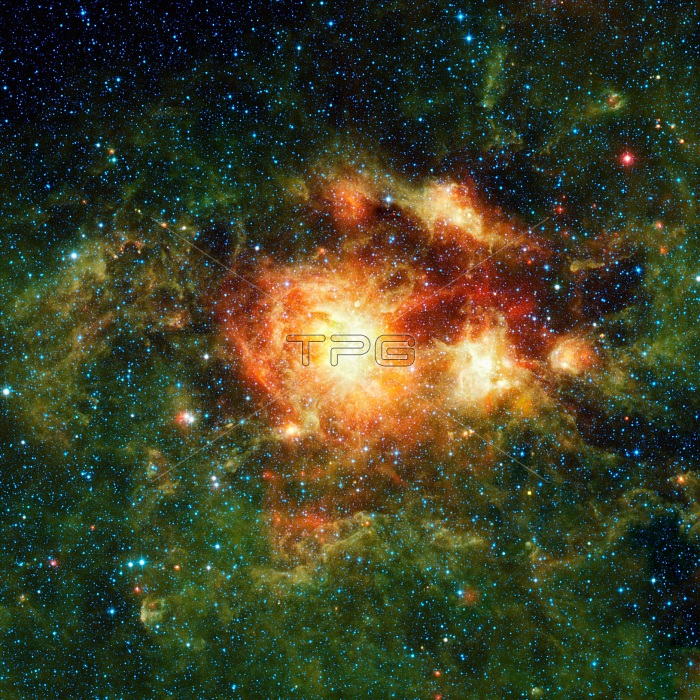
This infrared image taken by NASA's Wide-field Infrared Survey Explorer, or WISE, shows a star-forming cloud teeming with gas, dust and massive newborn stars. A cluster of stars called NGC 3603. The cluster contains some of the most massive stars known. Winds and radiation from the stars are evaporating and dispersing the cloud material from which they formed, warming the cold dust and gas surrounding the central nebula. This greenish "halo" of warm cloud material is seen best by WISE due to its large field of view and improved sensitivity over past all-sky infrared surveys. The massive stars in the center of the cluster triggered the formation of younger stars in the halo, which can be seen as red dots. The dust at the center of the cluster is very hot, producing copious amounts of infrared light, which results in the bright, yellow cores of the nebulosity. Ultimately, this turbulent region will be blasted apart by supernova explosions. Massive star clusters like this one are an important link to understanding the details of the violent original epoch of massive star formation in the early, distant universe. Astronomers also use them to study distant starbursts that occur when galaxies collide, lighting up tremendous firestorms of brilliant, but ephemeral, stars in the wreckage. Because NGC 3603 is so close, it is an excellent lab for the study of such faraway and momentous events. In the WISE image, infrared light of 3.4 and 4.6 microns is blue; 12-micron light is green; and 22-micron light is red.
| px | px | dpi | = | cm | x | cm | = | MB |
Details
Creative#:
TOP22312127
Source:
達志影像
Authorization Type:
RM
Release Information:
須由TPG 完整授權
Model Release:
N/A
Property Release:
No
Right to Privacy:
No
Same folder images:

 Loading
Loading